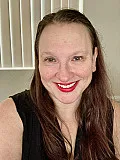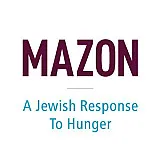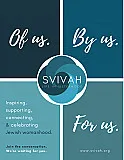Embodying Passover - Yoga Practice

Why Passover Yoga?
Passover is a time when we recall our ancestors’ Exodus from Mitzrayim. At the seder, we speak of the struggle of the slaves, the bondage they lived through and their journey into freedom. The Haggadah enjoins us every year to see ourselves as having been freed from Egypt ourselves. How do we do that? This yoga practice aims to take that question from the intellectual into the emotional and to ground in the physical. This practice invites us to stop and notice where we feel tightness in our bodies and a longing for freedom in our spirits.
Passover requires a lot of preparation: cleaning, cooking, and bringing all your people together. Let this yoga practice be a time to devote to your own body, spirit, and soul as a way to prepare yourself to welcome others.
OPENING MEDITATION
Find a comfortable seat. Try an easy pose like (sukhasana) or kneel in hero’s pose (virasana). Take a few moments to settle in, perhaps seating yourself on the edge of a folded blanket or block. You can also sit in a chair.
Go ahead and let your eyes close or keep a soft gaze downward. Allow your thoughts to turn inward. Feel your sitting bones underneath you. Lengthen your spine as you lift the crown of your head toward the ceiling. Notice if that gives you more space in the belly and the chest. Roll your shoulders up toward your ears and then release them down your back. As you breathe in, let your belly expand. As you exhale, empty your belly completely. For a few minutes, focus on your breath, noticing the subtle sensations in your body.
Stay here with your breath, continuing to inhale and exhale exploring your Neshama, or soul. In Hebrew we have a few different words for soul and breath. One of those words is ruach, often translated as “spirit” or “wind.” In fact, in the Exodus story, the children of Israel are described as being kotzer ruach, having shortness of breath. Check in with your breath and your spirit. How is your ruach? Your breath? How is the internal weather of your heart and mind? Without judgment, simply notice.
Take a moment to see if you notice where in your body you feel constriction, anywhere you encounter that sense of Mitzrayim. Now, see if you can simply breathe into that place.
When you’re ready, slowly begin to open your eyes. As you begin to warm up your body, you might take some simple rounding and caving of your spine, or move your body in any way that feels good. These warm ups bring some fluidity to the joints and spine, easing movement.
Opening Kavanah: You Are Sovereign
The foremost theme for this month and the gift of Passover is movement from slavery to freedom, from constriction to expansion, from reacting to the demands of others to acting from a place of internal sovereignty. Please take on these suggested poses (and those from any body-based practice) with this in mind, and keep your own body’s unique needs in mind as you practice this yoga.
Upon receiving the Torah at Sinai, the Israelites camped at the base of the mountain as a community. But each person also heard their own unique message and arrived at their own understanding of Torah and the Jewish tradition. When the Israelites received manna in the desert, the amount each wanderer received was according to their specific and individual needs — no more and no less. Remember, you are the authority and you are sovereign over the gorgeous and entirely unique domain that is your body-soulheart-spirit being, for this practice and always.
Theme 1: Moving From Constriction To Expansion
Mitzrayim
When we look at the Hebrew word Mizrayim, we see within it the word tzar, which means “constriction” joined to the word mayim, which means “water.” All of the joints in our bodies are surrounded by water in the form of synovial fluid. As you practice these poses, bring awareness to the fact that the joints (tzar) in our bodies — wrists, elbows, shoulders, hips, knees, and ankles. These enable us to move, but also need mayim. We need softness and fluidity in order to be healthy and strong.
Theme 2: Softening the Heart
"And Pharoah hardened his heart..." -Exodus 8:28
As Pharaoh witnessed and experienced the Ten Plagues, we hear over and over that his “heart is hardened.” The language in the text indicates that his obstinacy became habitual. Releasing habitual practices that no longer serve is another theme of Nissan.
Facing the burning bush, Moses is told to “take off his shoes” (Exodus 3:5). But the Hebrew can also be translated as “unlock your habits.” Day to day, as we sit and move with postures of leaning over computers and steering wheels, we create a habitual shape in the body that has our shoulders rolling forward and chest collapsing, creating a “closing of the heart.” Heart-opening poses support us in opening our hearts and shoulders, and also bring awareness to the spaces behind our hearts. They provide a counter to the habitual way we move through the world.
Theme 3: Stepping Into the Sea On Dry Land
And the Israelites entered the sea on dry land” Exodus 14:29
It’s fascinating to think that the sea parted for the Israelites. The text says the Israelites stepped onto dry land b’toch, “inside of,” the sea. How could the land be dry if the sea had just parted? Have you ever tried to walk on wet sand just after the waves receded? It’s not easy. Yet this is our task in Nissan. How can we find dry land among turbulent waters?
How can we maintain stability and connection in times of change and upheaval? How can we stay upright and connected to what’s solid during intense change?
These standing poses can help us feel our own feet solidly rooted. They allow us feel our legs rising up from that foundation as a source of strength and support as we move through the ever-changing world and reach up for our dreams.
CLOSING KAVANNAH
Breathe. Let the body and mind settle. Allow your body to begin the powerful work of healing itself by simply allowing yourself to be.
Consider what we can accomplish during this month and during our Passover experiences that will help us, our communities, and the world walk towards symbolic Jerusalem, towards a place that feels like home. The Haggadah reminds us that once we were slaves, but now we are free to move about at our own will. How are you — how are we — moving towards freedom?
The Haggadah also reminds us that not all people are free. We must free ourselves to help others to do that same. We must begin to heal ourselves and then help others heal.
May we all find peace, joy, and movement this Passover. And may we send our blessings to all who are need of freedom and healing.
--------
This activity was created by Rabbi Sarah Tasman and Julie Emden, RYT-500. Sarah is a lifecycle officiant, mikvah guide, Jewish yoga teacher, and a member of the Shechinah Council for At The Well. You can find her at www.rabbisarahtasman.com.
Julie is Director of Embodied Jewish Learning at Jewish LearningWorks in San Francisco. She offers workshops, retreats and a teacher training in Embodied Jewish Wisdom. Contact her [email protected]
Inspired to create
your own Haggadah?
Make your own Haggadah and share with other Seder lovers around the world
Have an idea
for a clip?
People like you bring their creativity to Haggadot.com when they share their ideas in a clip
Support Us
with your donation
Help us build moments of meaning and connection through
home-based Jewish rituals.
OUR TOP CONTRIBUTORS
Passover Guide
Hosting your first Passover Seder? Not sure what food to serve? Curious to
know more about the holiday? Explore our Passover 101 Guide for answers
to all of your questions.






















